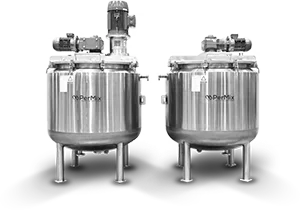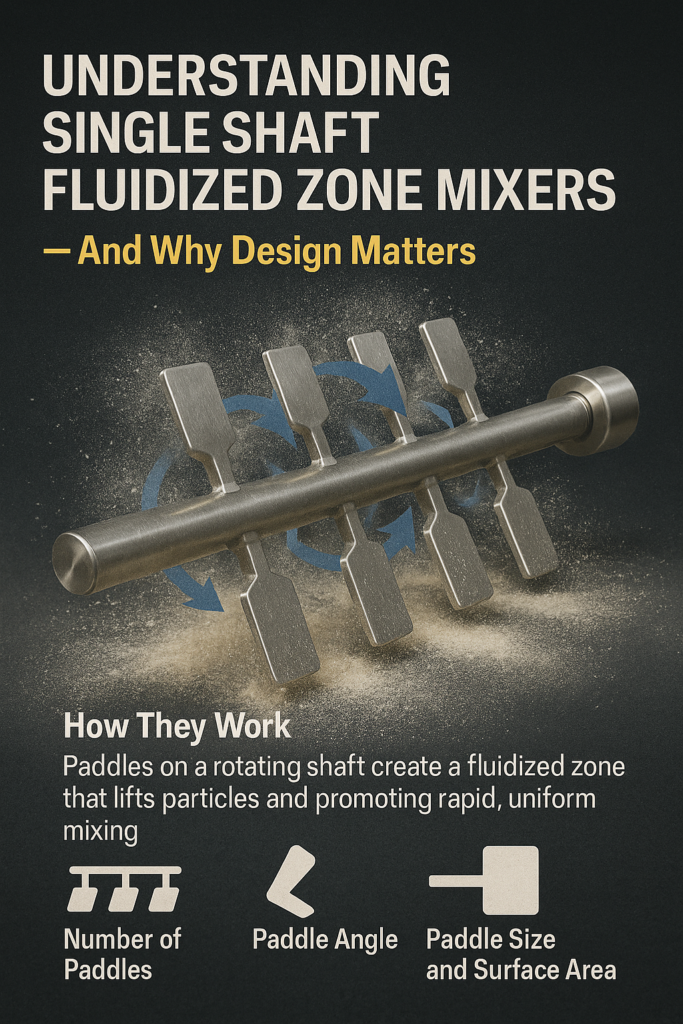Industrial Mixers
PerMix News & Updates



Understanding Single Shaft Fluidized Zone Mixers — And Why Design Matters
Single Shaft Fluidized Zone Mixers are widely used in industries ranging from food and pharmaceuticals to chemicals and nutraceuticals due to their ability to mix powders, granules, and even minor liquids rapidly and uniformly.
But despite the common name, not all fluidized zone mixers are the same — and performance can vary dramatically based on key design elements.
How They Work:
A Single Shaft Fluidized Zone Mixer consists of a horizontal shaft equipped with a series of paddles. These paddles rotate at high speeds, mechanically lifting the material from the bottom of the mixer into a fluidized zone — a state where particles are suspended and move freely, almost like a fluid. This movement allows for:
•Extremely fast mixing
•Uniform distribution of ingredients
•Minimal heat generation
•Gentle handling with high efficiency
The result is a well-mixed batch in a short period of time, even for challenging or cohesive materials.
🎯 What Really Affects Mixing Performance?
The efficiency and quality of a fluidized zone mixer rely heavily on three often-overlooked design factors:
1) Number of Paddles
•Too few paddles = insufficient movement and dead zones
•Too many paddles = excessive energy consumption and unnecessary turbulence
•The right number = ideal particle suspension and fast mixing
2) Paddle Angle
•Determines how the material is lifted, sheared, and redirected
•A precise angle ensures the material flows uniformly without buildup or segregation
3)Paddle Size and Surface Area
•Impacts the amount of material being moved at any given time
•Larger paddles can overwork the material; smaller paddles may underperform
•Optimized paddle surface balances lift, shear, and flow
When these factors are properly engineered, the result is a truly fluidized mixing zone that operates efficiently with consistent results — batch after batch.
🧠 Why This Matters:
Many mixers on the market use the term “fluidized zone” but lack the engineering precision to actually achieve true fluidization. A mixer that isn’t correctly balanced in paddle count, angle, and size may:
•Leave unblended pockets (dead zones)
•Take longer to mix
ªConsume more power
•Struggle with cohesive powders or minor liquid additions
🔧 How PerMix Approaches Design:
At PerMix, each Single Shaft Fluidized Zone Mixer is carefully engineered with these variables in mind. We customize and fine-tune the design based on product characteristics, batch sizes, flow behavior, and mixing goals — because we understand that design details define performance.
This level of precision ensures our customers achieve shorter mix times, greater batch consistency, and better overall process efficiency..
#ProcessEngineering #MixingTechnology #FluidizedZone #PowderMixing #FoodEngineering #PharmaceuticalManufacturing #IndustrialMixing #PerMixKnowledge
